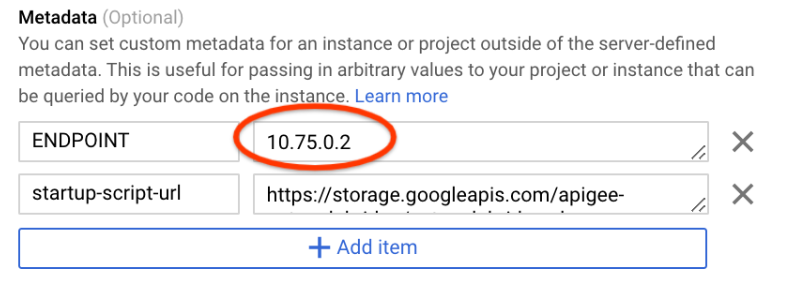This page applies to Apigee, but not to Apigee hybrid.
View
Apigee Edge documentation.
![]()
This topic explains how to change the IP of an Apigee instance by manually updating the VMs.
Overview
When an Apigee instance is deleted and then created again, an IP address is generated for the newly created instance. For example, certain instance parameters, such as cidrRange and networking, are immutable. Therefore, if you want to change these parameters, you must delete the instance and recreate it with the desired configuration.
In most cases, when you recreate an instance, the same instance IP is selected, but getting the same IP is not guaranteed. The VMs that are routing traffic from the load balancer to Apigee's private IP still have the old IP address; therefore, in cases where a new instance IP is generated, you have to manually update the VMs with the new IP.
Changing the instance IP
To update the VMs with a new instance IP, follow these steps:
In the Google Cloud console, go to the Virtual Machines > Instance templates page.
- Click on the Apigee instance template (the template that you want to copy and update).
- Click Create Similar.
- In the Name field, provide a new name for the template. For example, you might add a suffix like "v2" at the end of the original name.
- Under Advanced options, click the Management tab.
- Scroll down to the Metadata (Optional) section and look for the key value pair containing the
ENDPOINT key. Change the value of the endpoint to match the new instance IP. Use your
IP, not the one shown in the screenshot:

- Click Create to create the template.
In the Google Cloud console, go to the Instance groups page.
- Under the Name column of the list, click the name of the Apigee instance group that you wish to modify.
- Click Edit to modify this instance group.
- Under Instance template, select the new instance template (the one you just created).
- Click Save.
- At the top of the page, click Rolling update.
- Leave all the defaults/presets as-is and click Update.
It takes a few minutes for the new VMs to come up, and the old VMs will be shut down and removed. Once the new VMs are up, all API traffic will resume normally.
